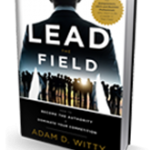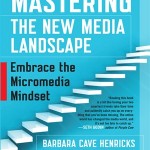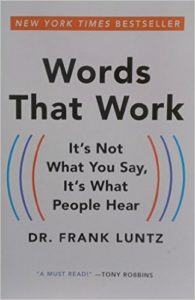Brand Book Bites from Words That Work
(This is the latest installation in a long-running series of introductions to books I recommend. If you would like me to look at a book on business, brands, or the people who work on them, please let me know in the comments section below.)
– the book: Words That Work: It’s Not What You Say, It’s What People Hear, a classic text on communications, originally published in 2007 and then updated after the 2008 Presidential election
– the brain: Frank Luntz. Wikipedia provides the most unaffected description of Luntz that I could find, stating he is “an American political consultant, pollster, and ‘public opinion guru’ best known for developing talking points and other messaging for various Republican causes.” He created the “dial session” method of conducting focus groups with people while they watch something (a political debate, an ad, a sporting event, etc.) and turn a dial to indicate their positive or negative reactions.
Luntz has been credited with advocating for the use of “global warming” instead of “climate change,” “energy exploration” instead of “oil drilling,” and “death tax” instead of “estate tax.” As you can imagine, he’s made many friends and many enemies — he’s also written a terrific book that demonstrates the power of words and provides extremely helpful instruction on how to craft communications so they make their intended impact. So, by drawing your attention to this book, my intent is to avoid debate on the merits of Luntz’s political involvement and instead focus on the takeaways that brand managers can benefit from.
– the best bits: The title of the book conveys the primary point of the book — it’s not what you say, it’s what people hear. Brand managers — and others in brand-related roles including communications directors, copywriters, and public relations managers — work hard to create and manage perceptions of their brands. The biggest mistake we make is thinking more about what we want to say than what we want people to think, feel, and do as a result of our communications.
As Luntz explains:
“You can have the best message in the world, but the person on the receiving end will always understand it through the prism of his or her own emotions, preconceptions, prejudices, and preexisting beliefs.” He goes on to say, “It’s not enough to be correct or reasonable or even brilliant.” We must put ourselves in the other person’s shoes and understand how that person will perceive what we say.
Some other salient points:
- “Words that work are catalysts.” — They get people to do something, to change.
- “The most successful advertising taglines are not seen as slogans for a product. They are the product.” — Luntz explains that you don’t want any “light space” between your product and your marketing.
- “Main Street, not Wall Street” — Luntz says this is his most important advice to companies. “The more convincingly you can present your company as personal, relatable, down-to-earth, and in touch — the virtues of a small business — the better you will weather large-scale growth.”
The book also covers “Ten Rules Of Effective Language” and explains each:
- simplicity
- brevity
- credibility
- consistency
- novelty
- sound (the sound and texture of language should be just as memorable as the words themselves)
- aspiration
- visualization
- questioning
- context (give people the “why” of your message before you tell them the “therefore”)
– the bottom line: If you can read past the political topics in the book and suss out the implications for brands — and I recommend you do so — Words That Work is a valuable resource that will help you develop stronger brands and customer relationships through communication.
related:



